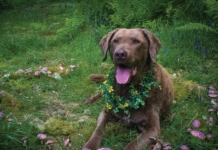All photos © Kevin Baker / Netflix
As the son of famed fairy painter Brian Froud and fairy sculptor Wendy Froud, artist Toby Froud grew up in the idyllic Devon countryside, surrounded by creatures of Faerie, even after being kidnapped by goblins for an infant acting stint as the Babe With the Power in the Jim Henson film Labyrinth. Wondrous and strange-looking creatures populated his formative years, between the magical folklore of local Devon and the sculptures and paintings that filled every shelf and corner of the 15th century cottage he called home. It sounds like a dream childhood, and in more ways than one: He fondly recalls his upbringing, saying, “That’s been the funniest part about my growing up as the child of Brian and Wendy Froud. People are always still kind of surprised to hear that we didn’t argue. There was nothing to argue about. We always just had fun. We explored our creativity, and they treated me just the same as anyone else.”
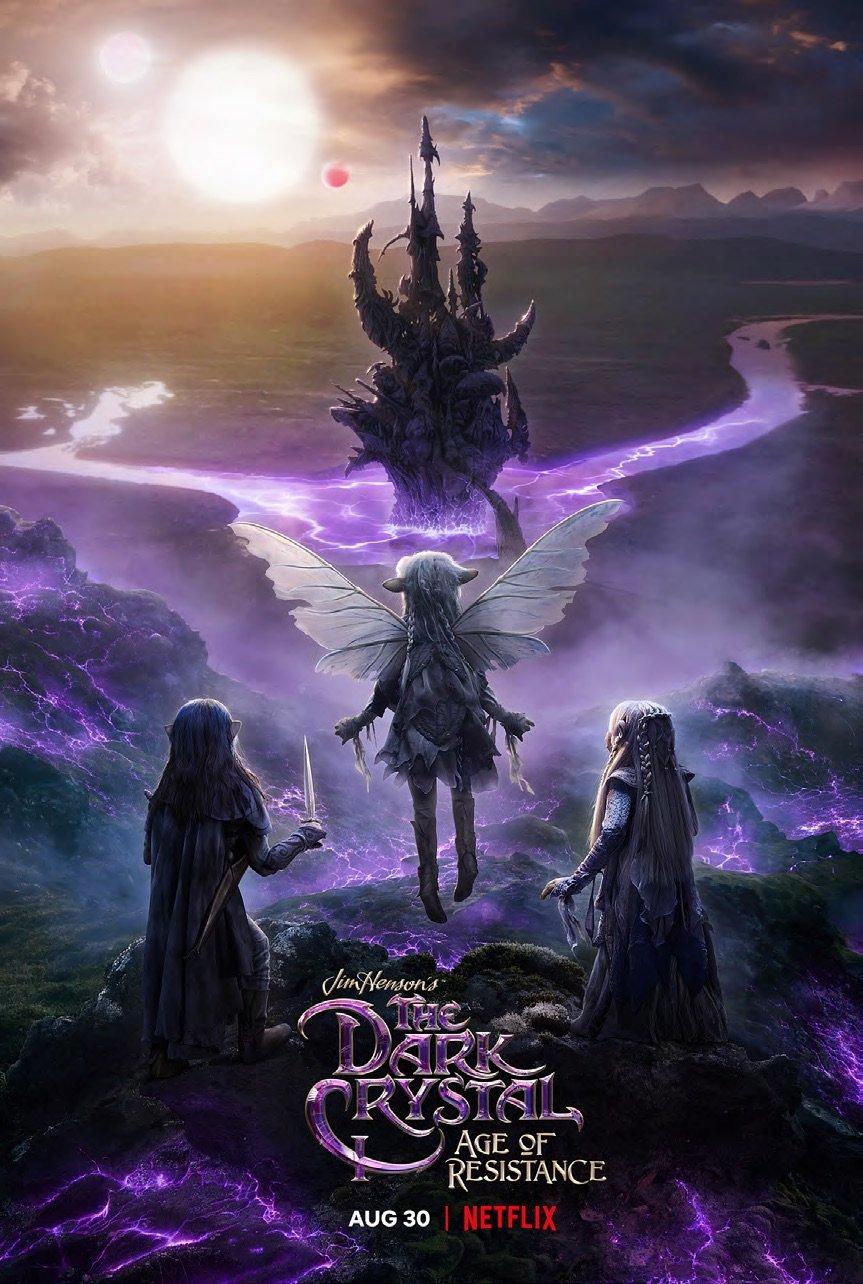
This equal footing with his fae-touched parents only grew as he developed his own unique creativity, artistic voice, and connection to Faerie. As an adult, Toby began teaching workshops on sculpting fairy creatures with Wendy, and Brian created a character design for Toby’s short film Lessons Learned. In every case, although Toby’s methods sometimes differed from their own, his parents admired his artistic vision. So the opportunity to work together to establish the entire look for the new Netflix series Dark Crystal: Age of Resistance, a prequel to Henson’s 1982 film, was a dream job for all three in the family.
Toby signed on as design supervisor for the ten-episode miniseries early in the process, after Peter Brooke, creative supervisor for the Jim Henson Creature Shop, enlisted Brian to reprise his role in creating and expanding the strange world of Thra, where Dark Crystal is set. Shortly thereafter, the production was announced to the public, and fans of the original film kept asking on social media, “Are the Frouds going to be involved?” It’s clear how pivotal Brian and Wendy were to the look of the original film. Henson was inspired in large part by Brian’s art to create the film in the first place and gave him a huge amount of artistic freedom in deciding what the look, feel, and sometimes even the plot of the film would be. There was no script at first, just Brian sketching and painting away at his desk.
The original Dark Crystal followed the character of Jen, a young man of the race of Gelfling. The last of his kind (or so he believed), he was sent by his wise master, a Mystic, on a quest to find the witch sorceress Aughra and take the crystal shard she gave him to the palace of the Skeksis to restore the dark crystal. Although it was not immediately a commercial success, the film has since attained a cult following, in large part because of the visual impact of Brian’s designs and the appeal of the characters of Jen and Kira that Wendy sculpted.
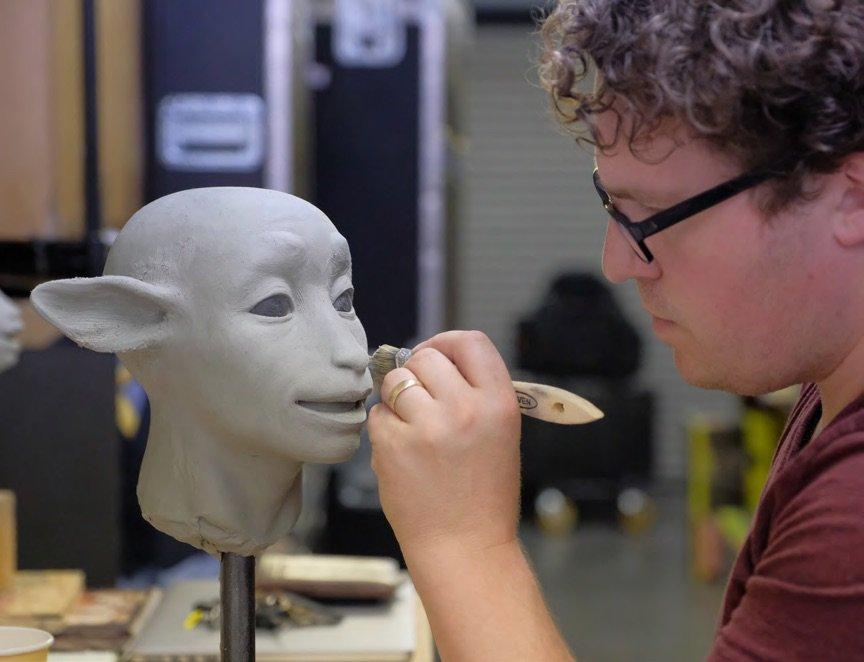
Brian first met Wendy in the workrooms for Dark Crystal, and they immediately had a respect for each other’s artistic sensibilities. This later turned into a romantic partnership as well. Brian was best known for co-authoring the extremely popular book Faeries with fellow artist Alan Lee, and Wendy was living in New York with roommates after graduating from art school. Henson was given one of her sculptures as a gift, and based on that piece, he recruited her to work on his projects. Once Brian and Wendy met, they immediately began building on each other’s skill and imagination, a partnership that continues to this day.
But for Age of Resistance, the family of two is now a powerful and creative partnership of three (coincidentally a magical number in Thra; the new series also has three main characters). The family have seamlessly worked together to both recall the look and feel of the original film and expand on it to fill eight and a half more hours of story. Although Toby says that there were “a lot of laughs” during the process, he also points out that he and his parents would also argue creatively, since they each had strong artistic visions and opinions. The end result, however, was always to come up with better ideas and solutions.
“The world was built, the geometry laid in,” Toby explains, referring to the groundwork of the first movie. “So it was wonderful to be able to go in and expand on that and actually create more magic, more layers of magic within the idea of it. The costumes, the sort of Gelfling-wear, the different tribes that we’re going to see. The ideas and patternings among those and the Skeksis costumes. Thra is a living planet. Everything lives together, and the costumes, the plants, everything around you has life, has breath to it. It truly is a mythology.”
Brian, Wendy, and Toby worked primarily on the puppets themselves rather than the sets and props, but there was also crossover and assistance between the Frouds and the production design team led by Gavin Bocquet. “I would make sure to help if they needed something style-wise,” Toby says, “but we concentrated on the characters and the creatures of the world, and we all came together to make sure everything fit, that the landscape and the characters fit together. Brian did a lot of consulting with Bocquet to make sure the world still felt like Thra, the old world into the new ways and new locations that we’re going to show.”
The Frouds have all had glowing words to say about Age of Resistance’s director, Louis Leterrier. Since Leterrier had never directed a puppet film before, he had no preconceived notions about what a puppet was or was not capable of. And when he was told an action or an angle wasn’t possible, he would sometimes ask the team to just try it. “He’d say, ‘Let’s make them do that. Let’s push this,’” Toby says. “‘I’m going to have the camera swing through here, and I want to have the puppets move that way.’ And we were like, ‘Ahh, okay…’ But then it worked. He rose to every challenge.” Although Toby mostly worked behind the scenes, he was able to occasionally run to the set to help with logistics or repairs. “It’s remarkable. You are immersed in a wonderful, strange world four feet off the ground.”
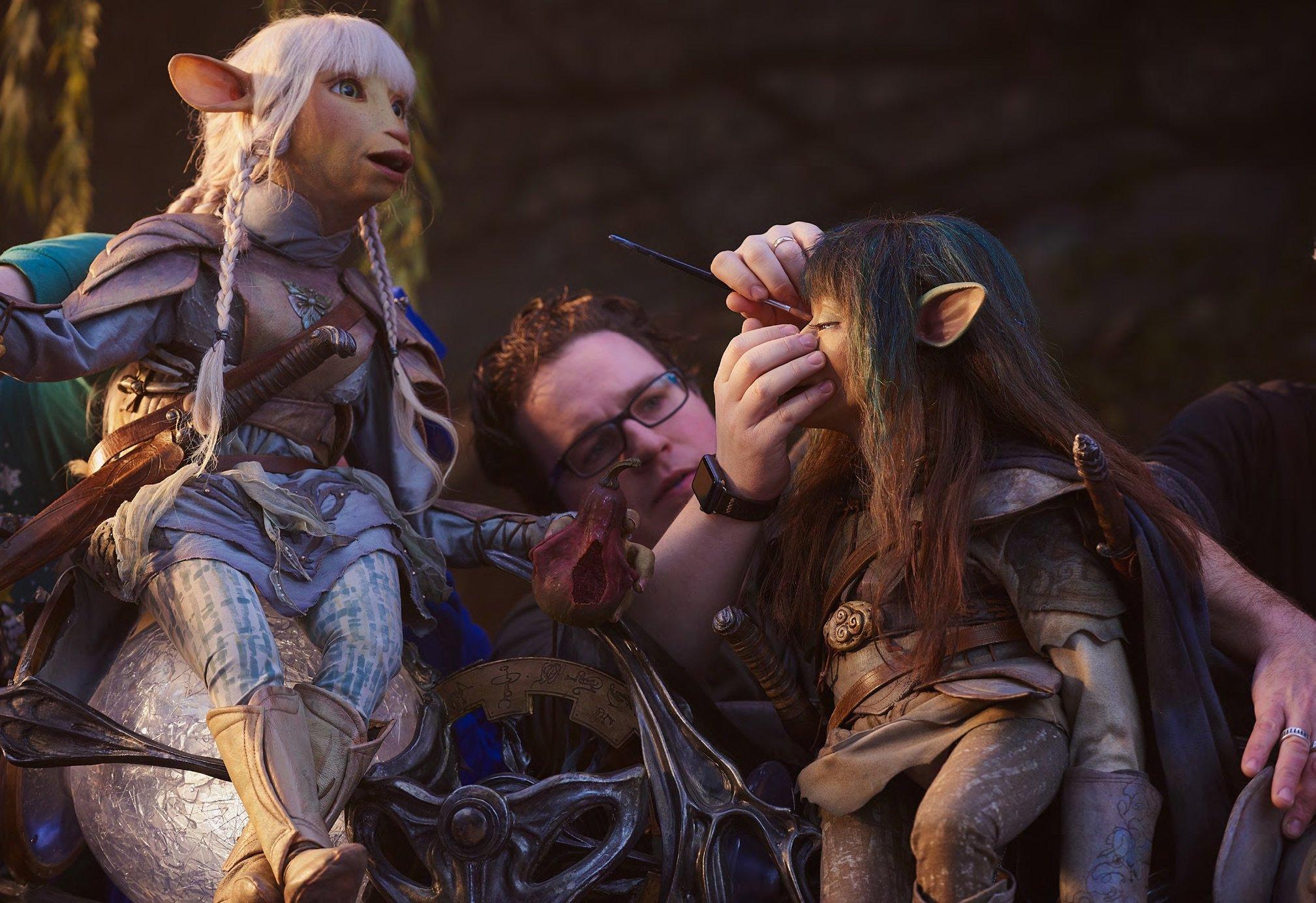
Logistically speaking, the project was extremely challenging to craft. Sometimes, Brian and Wendy couldn’t remember how a certain character or action had been achieved in the original. Trying to keep the Gelfling puppets comfortable for the puppeteers was also a big challenge. “Gelflings are some of the hardest puppets that a puppeteer will use,” explains Toby, “because you have to be so subtle and emote, and you have to hold a puppet up that’s very awkward and breathe life into it. And you’re asked to do that day in and day out. Certainly it’s a challenge.” The Frouds tried to help keep the puppeteers more comfortable by using tricks and little pads in the puppets, rigs to hold the puppets to puppeteer arms. They also tried old techniques used for Jen and Kira. But Toby admits, “I have no idea if we actually achieved making them comfortable or not.”
Visually, the Gelflings were also a challenge, since expanding the world of Thra meant introducing the audience to completely new tribes of Gelflings living in vastly different parts of the world, some underground. With the characters and costumes, they had to ensure that the differing clans were identifiable, but that they had the same feeling as a race. The increases in technology were a challenge too. “The original movie was shot on film,” Toby says, “and film has this wonderful quality to it that lets everything sit back and blur slightly. So details weren’t as necessarily important. It was about color and texture. Whereas this time around, with 4k technology and high-end cameras, we really had to step up the details of everything, because we knew the audience was going to be looking, and we couldn’t hide anything anywhere. So it was amazing the amount of things we put into these, and hopefully it shows.”
Some of these added details can be seen in Aughra’s costumes. “She is Mother Aughra,” Toby says. “She is almost a part of Thra, an old keeper of Thra originally. And Thra starts to talk to the world, to Aughra and the Gelflings. Aughra has to come to terms with that change, and the change in the world, and find her magic again.” This magic, this sense of balance, can be seen in her clothing, especially in the cloak that she wears. “We took it very seriously to make sure that as Mother Aughra, and certainly a very powerful witch, her gravitas and energy and the feeling of her had power.”
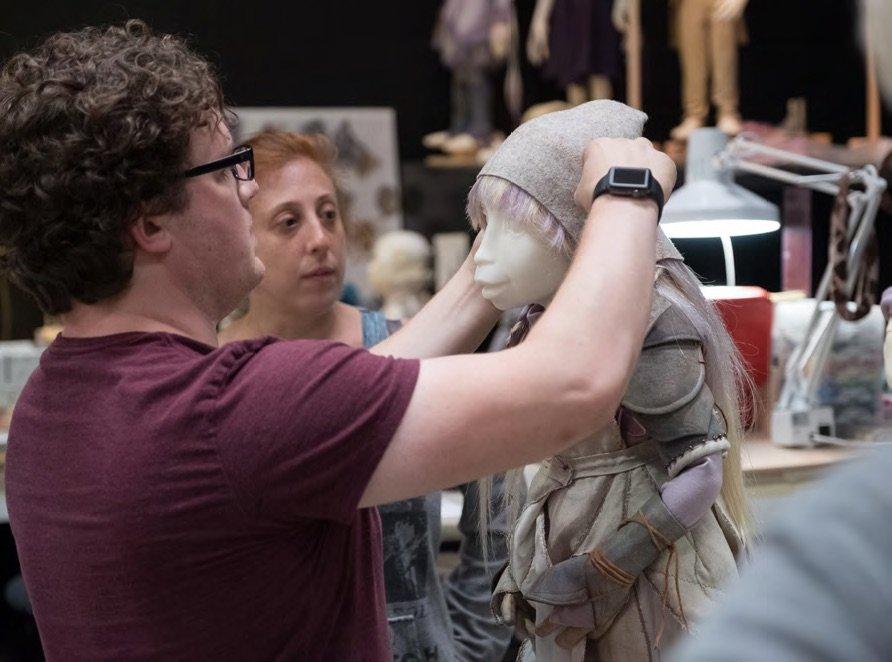
Another younger magic user can be seen in the character of Deet. “She gets to go on a journey, and Thra talks to her,” Toby says. “So that is a beautiful story we got to tell. You get to see the magic reach out in different ways, and also a physicality within the magic happening, and symbols. Some might have been lost along the way in their world, and they’re rediscovering and finding and waking up to the idea that the planet is living alongside them.”
It is a remarkable thing that Toby Froud and his parents have achieved with Age of Resistance, in creating such magical characters. But it takes a magic wielder to create a witch like Aughra as well. “It’s magic, absolutely,” Toby says. “My mother and father and I feel very strongly about that. Whenever you are creating anything, when you imbibe what you’re doing with magic, and that’s what we always try to do, we let the character breathe and come to life. You’ll start out by saying, ‘It should be this way,’ and halfway through, the character says, ‘Nope. I want to do this. This is how it’s going to be.’ You let magic come out. You let things into you, and you make sure that you are both giving and receiving.”





























